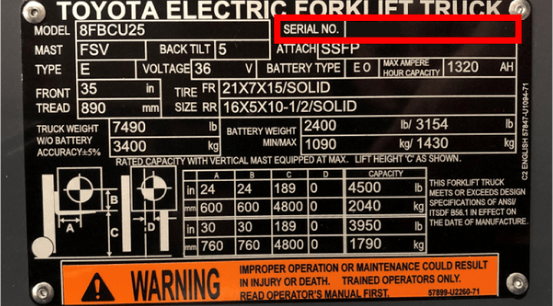What is a Forklift Provider Facility Energy Audit and Why Do I Need One?

A facility energy audit is an opportunity to have an experienced, trusted representative from your local material handling solutions provider come to your facility and look for opportunities where you may be able to increase efficiency and lower operational costs based on the use of forklift power options and facility power layouts (i.e. storage locations, charging locations, etc.).
Most importantly: They’ll recommend practical solutions tailored to your specific application and the way your business operates.
Often, these solutions are low-cost, such as process improvements or rotating your existing fleet. Investing in new charging systems, batteries, or other equipment may also be recommended — either now, or in the future when it’s time to replace existing equipment (allowing you to plan ahead for the changes and incorporate them into your budget in advance).
In this post, explore the areas that may be addressed in a facility energy audit.
Auditing Forklift Charging Stations:
Ideally with the assistance of an electrician or facilities manager, auditors will examine your current battery charging station.
Forklifts keep your business running, and charging stations keep your electric forklifts running. The audit will help you use these areas as efficiently as possible, enabling you to maximize every minute of every shift. The recommendations may pertain to station location, number of charging stations, and charging station schedules.
Auditing IC Forklift Fueling Stations:
Auditors will examine IC fueling stations from a variety of angles. They may consider how many trucks the stations are servicing, how much fuel is being consumed, how frequently trucks need to be refueled, and station locations in relation to other key areas and operational spaces.
Making sure that fueling locations and scheduling are convenient to operators in the flow of their work and natural breaking points, such as shift changes, can add up to a major impact on your operation’s efficiency and ROI.
Auditing Forklift Battery Storage:
Your current battery storage facilities and practices will also be evaluated.
Space is often at a premium, especially in warehouses and distribution centers. For those applications needing to store additional lead-acid batteries for swap outs to keep their equipment moving, this audit can help make sure the batteries are stored with as small a footprint as possible. Auditors may examine storage space, location, and exchange locations. This kind of audit may also help you assess the ROI of alternative energy source, such as lithium-ion batteries.
Auditing Facility Power Considerations:
Not only will the auditors look at your usage capacity (the maximum amount of power your facility is able to provide to your equipment), but also the types of electrical systems your facility already runs, your current overall throughput (the amps consumed daily), and — if different — your throughput during your peak season.
With these insights, you’ll be able to make sure that your facility is capable of providing the power your equipment needs — both in your typical day-to-day operations and in those seasons when you’re running fastest and working hardest.


